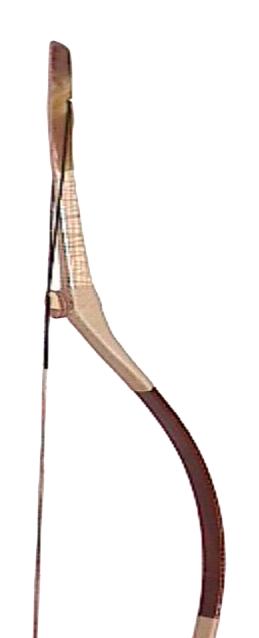Dear Friend,
This is not exactly a regular newsletter I am getting into, but I like
to keep in touch from time to time.
Since the last time I wrote (‘A Letter from Peking’) a number of people wrote back to me.
The thought of being able to get a kit of parts to make a Chinese bow stirred a lot of
interest. But I have to caution that a plan like that is a long way off. Others warned
that a kit like that would only be suitable for very experienced bowyers; and even then,
some experience with horn might be necessary. In the meantime, I have written to Peking
with a request from some quotations for materials such as cut horn, prepared sinew and
croaker fish bladders – the classic ingredients of the Chinese bow.
And one more thing is that a Chinese bow is a difficult weapon to
handle in the hands of those who do not know Chinese technique, including the thumbring and Mongolian release.
Dr. Grayson and Molly Strode’s Lecture
23 November was an important date for ATARN. Dr. Charles Grayson and
Molly Strode (of the University of Missouri - Columbia) addressed the first meeting of
ATARN held in Hong Kong. We co-organised the meeting with the Hong Kong Branch of the
Royal Asiatic Society. About 25 people came to hear Dr Grayson speak on the development of
the composite bow, along with an interesting show of slides illustrating the range of
items available in the
Grayson Collection.
Working from slides, Dr Grayson described the ‘taxonomic’
relationship between families of composite bows. ‘Taxonomic’ classifications are
based on the characteristics of the bows: and that is important because we have little
evidence to help create a timeline or cultural family tree for the development of the
composite bow (which, you remember, is any bow made of more than one material.)
Taxonomy aside, however, Molly Strode, who is both archaeologist and
art historian, was able the point out interesting correlation between conventions for
decorating bows and the bows’ cultural contexts. Korean and Japanese bows, for
example, were generally undecorated; Chinese bows had a modicum of decoration based on the
stylized Chinese characters for ‘wealth’, ‘good fortune’ and
‘longevity’, always on the back of the bow. Persian and Turkish bows, on the
other hand, were often richly decorated all over.
Apart from bows, we also saw wonderful illustrations of arrows,
quivers, thumb-rings and bow-cases. The slides are being transferred to JPEG images at
present, and we hope to display some soon.
(Politically Correct) Ways of Killing a Cat
A few weeks back, I bought a beautiful FRP reproduction of a Magyar bow
by Grozer. However, as soon as I started shooting it, I realized that, although
beautifully crafted and true to the original Avar bow reconstruction of Dr. Julius Fabian,
it had certain strange characteristics. The bow has long sayahs, but a very short loops at
the string nocks. This form of stringing had the advantage of not requiring string
bridges, but it was clear that the short loops were interfering with the bow as the arrow
left the string.
Sure enough, pages 135 and 136 of the ‘Traditional
Bowyer’s Bible, Volume Two’ explained that Dr. Julius Fabian
subsequently recognized that his original reconstruction had been incorrect in this
respect.
To overcome this, I have built a pair of cylindrical, leather string
bridges and made a new string with long loops which pass both sides of the sayahs.
